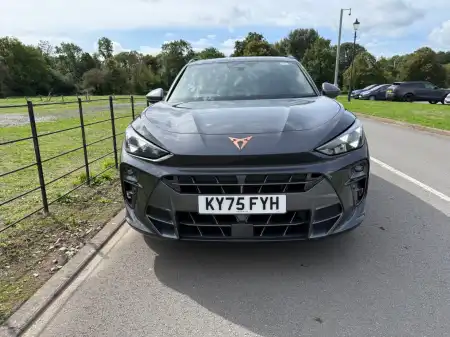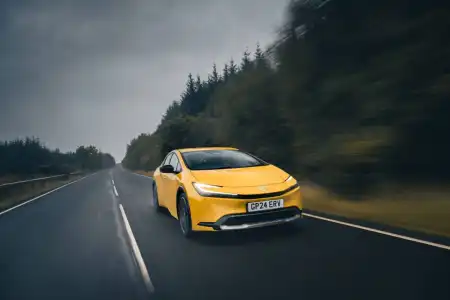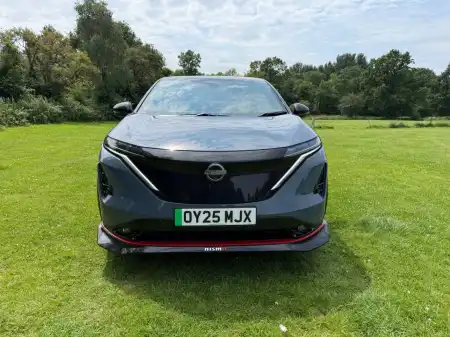- Spacious cabin and boot
- Reasonable handling
- Nice interior design
- The ride can feel unsettled
- Not particularly engaging to drive
- Warranty could be longer
Introduction
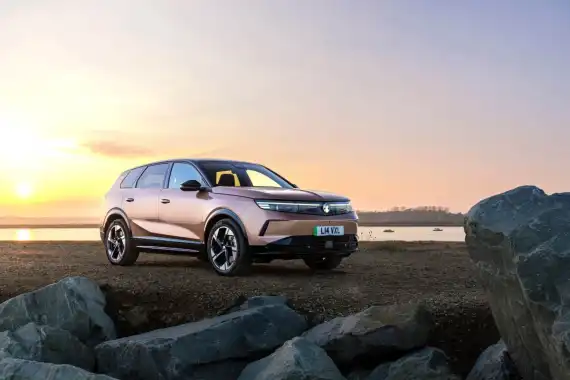
Although Vauxhall’s best-known cars tend to be smaller family hatchbacks, it also offers some larger vehicles.
With people flocking to buy or lease SUVs, the long-established British brand hasn’t been left behind. The griffin-badged automaker introduced the Mokka in 2012 and the Grandland X (as it was initially called) in 2017, while the larger Frontera is imminently being reintroduced, writes Tim Barnes-Clay.
What sets this new Grandland apart from the old model is that it's been electrified, offering a battery-operated version alongside a petrol-powered hybrid. In doing so, Vauxhall has made history. The Grandland is the final vehicle in the company’s fleet to remove the engine, and it now offers an electric variant of every model it sells.
Based on the STLA Medium platform from parent company Stellantis, the Grandland is longer, taller, and wider than before - over 170mm longer than the outgoing model.
Vauxhall offers three trims. The entry-level design features 19-inch alloys, a 10.0-inch infotainment touchscreen with Apple CarPlay and Android Auto, dual-zone climate control, LED headlights, and cloth fabric seats.
The GS sits in the middle, with a larger 16.0-inch infotainment screen, SatNav, pixel 3D headlights, 'Vizor' illumination, rear tinted windows, a rear-view camera, a wireless phone charger, vinyl front seat inserts, and a black roof.
The top-of-the-range Ultimate trim gets larger 20-inch alloys, a head-up display, a panoramic sunroof, a Focal sound system, a heated windscreen, a powered tailgate, and Nappa leather premium seating.
There is no choice when it comes to performance, though. The sole offering is an electric motor that produces 213PS, which is considerably more potent than the hybrid version.
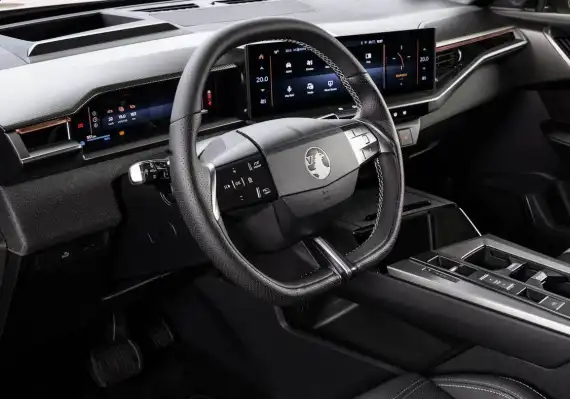
Inside and out, the Grandland Electric looks modern.
The Vizor replaces a traditional front grille with a glossy black panel and has become the centrepiece of Vauxhall's new design language.
Like other vehicles in Vauxhall’s fleet, its face looks decluttered, with straight lines and a contemporary finish.
The sides are reasonably smooth in appearance, although there are notable indentations and creases towards the bottom of the doors, sitting above some sizeable cladding.
The rear features a horizontal light bar, some angular creases, and even more black cladding that rises up behind the number plate.
The interior looks nice, is pleasant to the touch with plenty of plush materials, and feels well put together, although some of the plastics seem a little cheap.
The steering wheel is pleasing to hold. It features a flat bottom and a slightly flat top, with the spokes covered in buttons, putting most of the controls at your fingertips.
The centre console rises towards the dashboard, which slightly angles the infotainment screen towards the driver, positioning other controls within easy reach.
The touchscreen itself is very wide and features modern graphics on a sharp, clear display. When we tested it, it responded pretty rapidly, and the menu layout was simple to get used to.
Below the screen are physical buttons for the climate control, making it convenient to use on the move. The digital instruments behind the steering wheel provide lots of useful information and are presented clearly.
A feature missing from the entry-level model is a wireless phone charger. But on our Ultimate-trimmed test car, the phone sits behind a dark perspex panel so it doesn’t distract you while driving.
Premium brands won’t be quaking in their boots at the Vauxhall Grandland’s interior, but it’s pleasing to the eye and provides a step forward from the retiring model.
On The Road
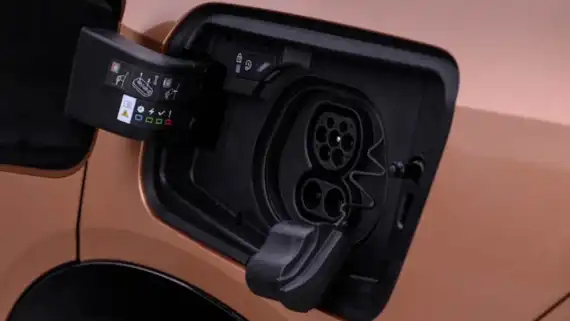
Handling & Performance
Although the Grandland Electric doesn't offer lightning performance, it can still go from 0 to 62mph in 9.0 seconds flat.
There is a sense that Vauxhall has restrained the power delivery, though. It builds gradually rather than being released in one big serving of torque - the latter being a common trait of other electric cars.
The full 213PS is only offered in Sport mode. Other settings produce less potency to help preserve the batteries’ charge. Even then, although the Grandland accelerates relatively well, some foes find it easier to reach motorway speeds or overtake on dual carriageways.
A slightly more energetic version of the Grandland Electric is being ushered in during 2025. However, this model focuses on extending the range, so only a modest performance hike will be offered.
The Grandland’s stopping power is also complemented by the regenerative braking system, which is fine but not the best we've used, and it takes a while to get used to.
At least the driving experience is quite serene, with Vauxhall doing a good job of dulling the noise from the road and wind as you drive along.
As for ride comfort, it's alright, but some competitors offer more absorption - the Grandland certainly has a firmer ride than plenty of rivals. While that’s partly due to our test car's larger 20-inch alloys, its firmer suspension also means it handles better than expected.
The performance around corners generates less body roll than we’d expected, so the Grandland is good at changing direction quickly, considering it’s a fair size. Unfortunately, the steering doesn’t weight up much around faster bends, so there’s little feedback through the wheel, depriving you of the confidence to push on.
Mind you, if you do push on, you'll start to understeer on corner entry, while the Vauxhall tends to feel a little skittish on straighter roads, especially at lower speeds, and takes a good while to settle down.
As a result, we wouldn’t call the Grandland fun or particularly engaging to drive, although it’s a noticeable improvement on the outgoing model. At least the light steering makes it easier to live with in built-up areas.
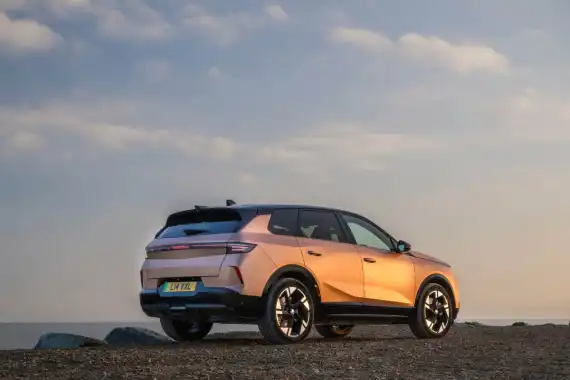
Space & Practicality
There is no electric seat adjustment, so you have to find a decent driving position manually. There is plenty of travel in the seat, though, helping you get comfortable.
You also sit fairly high up in the Grandland, which aids your view out of the front. The windscreen pillars, which aren't especially thick, also help.
At the back, though, it's a different story. The Vauxhall has a shallow rear windscreen and side windows that aren't that wide, meaning the back pillars are much thicker.
Happily, all but the entry-level trim has a 360-degree camera, and all models have front and rear parking sensors.
There is a large amount of legroom, headroom and shoulder room in both the front and back, with the rear seats featuring reasonable under-thigh support and a good amount of room for your knees.
Despite our test car losing an inch or two to a panoramic sunroof, the sloping roofline minimally affects the rear headroom.
Admittedly, the rear shoulder room goes away if the middle seat is occupied, especially as it's on the small side, but there are worse cars out there to be carrying three adults in the back.
The door bins are generously sized, and there's a refrigerated cubby in the centre console - a thoughtful touch on a hot summer's day. However, our test was carried out in freezing temperatures in rural Suffolk, so we’d have been grateful for a microwave.
The boot, which measures 550 litres in capacity, can accommodate many microwaves, a figure good enough to beat most of the Grandland’s competitors. This cargo capacity swells to 1,645 litres if you fold the rear seats down, and happily, the chairs collapse in a convenient 40:20:40 split.
Even better, you don't lose any boot space in the electric version compared with the hybrid.
Ownership
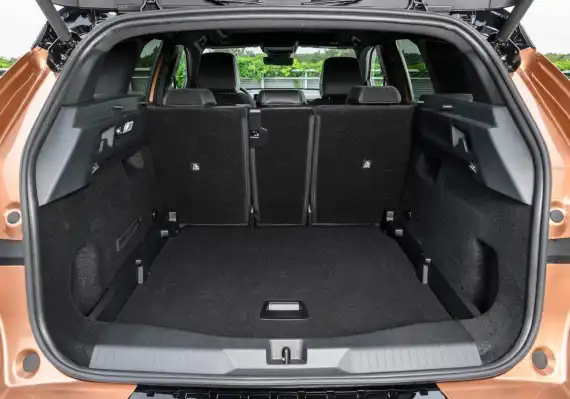
Running Costs
The Grandland Hybrid’s economy figures of 51mpg (124g/km CO2) are alright, but the electric version will still be cheaper to run, especially if you charge it at home.
With a 7kW home wall box, its 73kWh battery pack takes around six and a quarter hours to charge from 20-80%, while public charging at its maximum 160kW rate will achieve the same in 26 minutes.
The claimed range is up to 324 miles, depending on trim, although you won't achieve this in practice. 200 and 250 miles are more realistic.
2025’s Long-Range version offers a 98kWh battery with a claimed range of up to 430 miles.
Like all battery-powered rides, the Grandland Electric sits in the bottom band for Benefit in Kind tax, making it an attractive company car.
A three-year, 60,000-mile warranty is offered – much less generous than Kia, Hyundai and Toyota – while the battery gets an eight-year, 100,000-mile guarantee.
Verdict
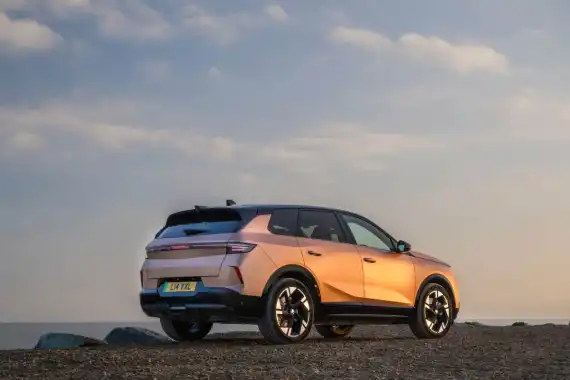
Taken in isolation, the Vauxhall Grandland Electric is tempting.
It is practical regarding cabin space and boot capacity, offers reasonable range, and has a nice interior. It is not expensive either and provides respectable equipment levels, especially above entry-level.
However, the Grandland Electric is a good all-rounder but doesn’t stand out in any particular area. Plenty of adversaries have also got their act together on equipment levels and interior design.
When you combine this with Vauxhall’s basic warranty offering, the Grandland Electric becomes a tad more challenging to justify. That said, it's a perfectly respectable family-sized car, and we can see why many motorists would think the same as they walk into a Vauxhall dealership with their kids in tow.

